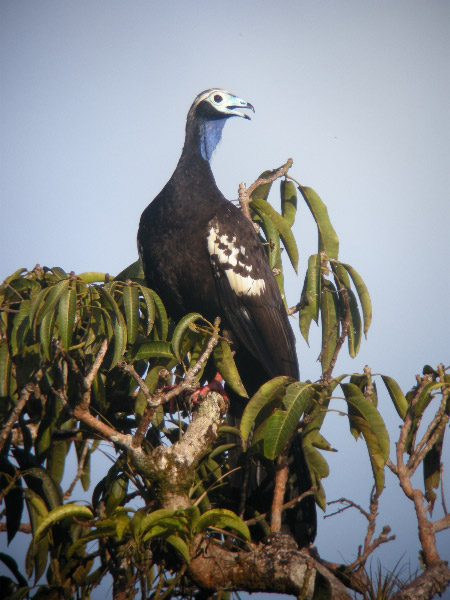Alternative name: Pawi
- Pipile pipile
Aburria pipile
Identification
65–69 cm (25½-27 in)
- Blackish-brown overall plumage, with faint purplish gloss
- White-tipped wing-coverts
- Dark crest with white streaking
- Pale blue cere and basal part of bill
- Darker blue dewlap,
- Red legs
Distribution
Trinidad where found only in north-eastern forests. Population is thought to be between 70 and 200 birds.
Close to extinction.
Taxonomy
This is a monotypic species[1].
Habitat
Canopy of remote montane tall primary forests.
Behaviour
Diet
Their main diet consists of a variety of fruits and seeds from numerous tree species.
Breeding
The nest is built in a tree. The clutch consists of 3 large white eggs which are incubated by the female.
Action
Their wings make a characteristic metallic rattling sound in flight.
References
- Clements, J. F., T. S. Schulenberg, M. J. Iliff, D. Roberson, T. A. Fredericks, B. L. Sullivan, and C. L. Wood. 2017. The eBird/Clements checklist of birds of the world: v2017, with updates to August 2017. Downloaded from http://www.birds.cornell.edu/clementschecklist/download/
- Handbook of the Birds of the World Alive (retrieved Mar 2018)
- BF member observations
Recommended Citation
- BirdForum Opus contributors. (2025) Trinidad Piping Guan. In: BirdForum, the forum for wild birds and birding. Retrieved 3 May 2025 from https://www.birdforum.net/opus/Trinidad_Piping_Guan





